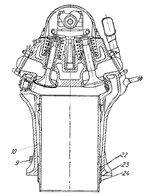La Cuadra never built aircraft engines.
Hispano-Suiza is based in Barcelona.
From Emmanuel Lage, by the armistice (1918), total production of Hispano-Suiza V-8 engines for the Allies reached a staggering total of 49,893 units, including 35,189 manufactured in France, 8,976 in the United States, 3,050 in Great Britain, 2 566 in Italy and 112 in Spain.
In 1920, owing to some tax problems, Hispano-Suiza became a french company "Société Française Hispano-Suiza" and the W and V-12 engines development and production was made at Bois-Colombes near Paris, as were all 1915-1918 versions of the famous V-8.
For the record, the Soviet Klimov M-100 to VK-108 series which derived with licenses from the Hispano-Suiza 12 Y (and without licence from the 12 Z...), was produced in more than 100,000 units.




